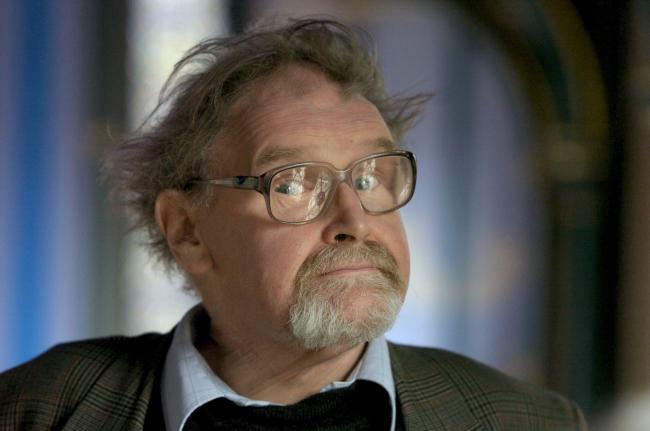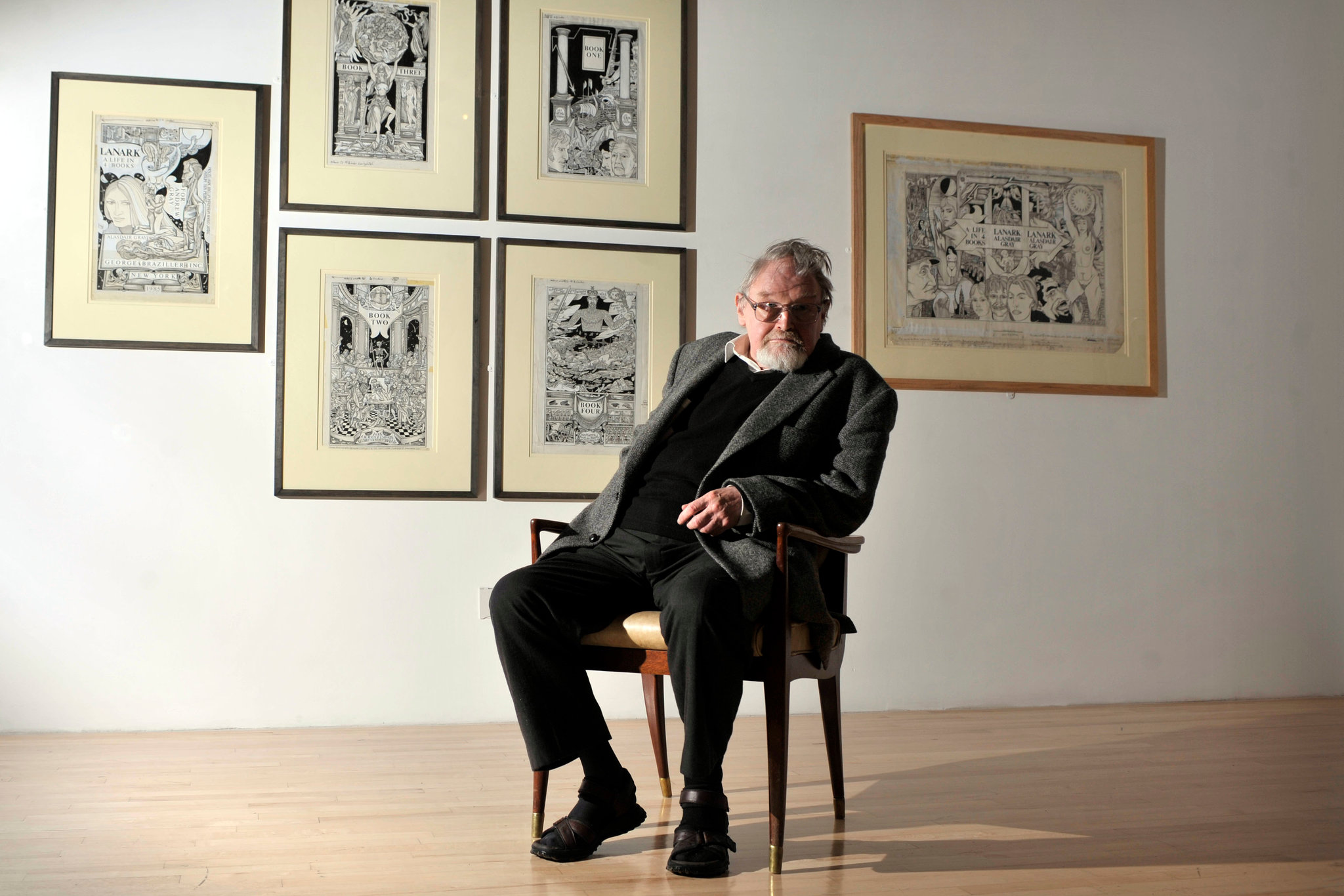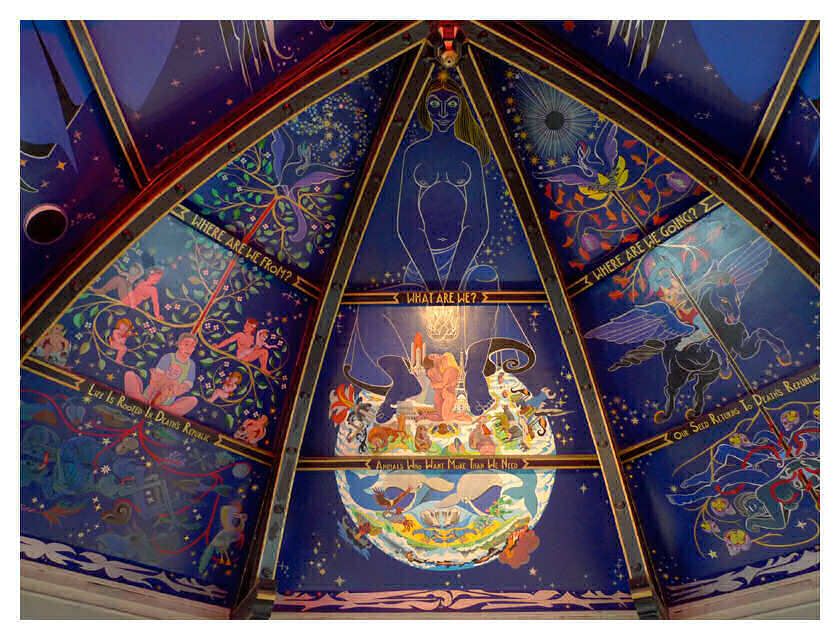Early years
Alasdair Gray is a 'self-employed verbal and picture artist,' according to him.
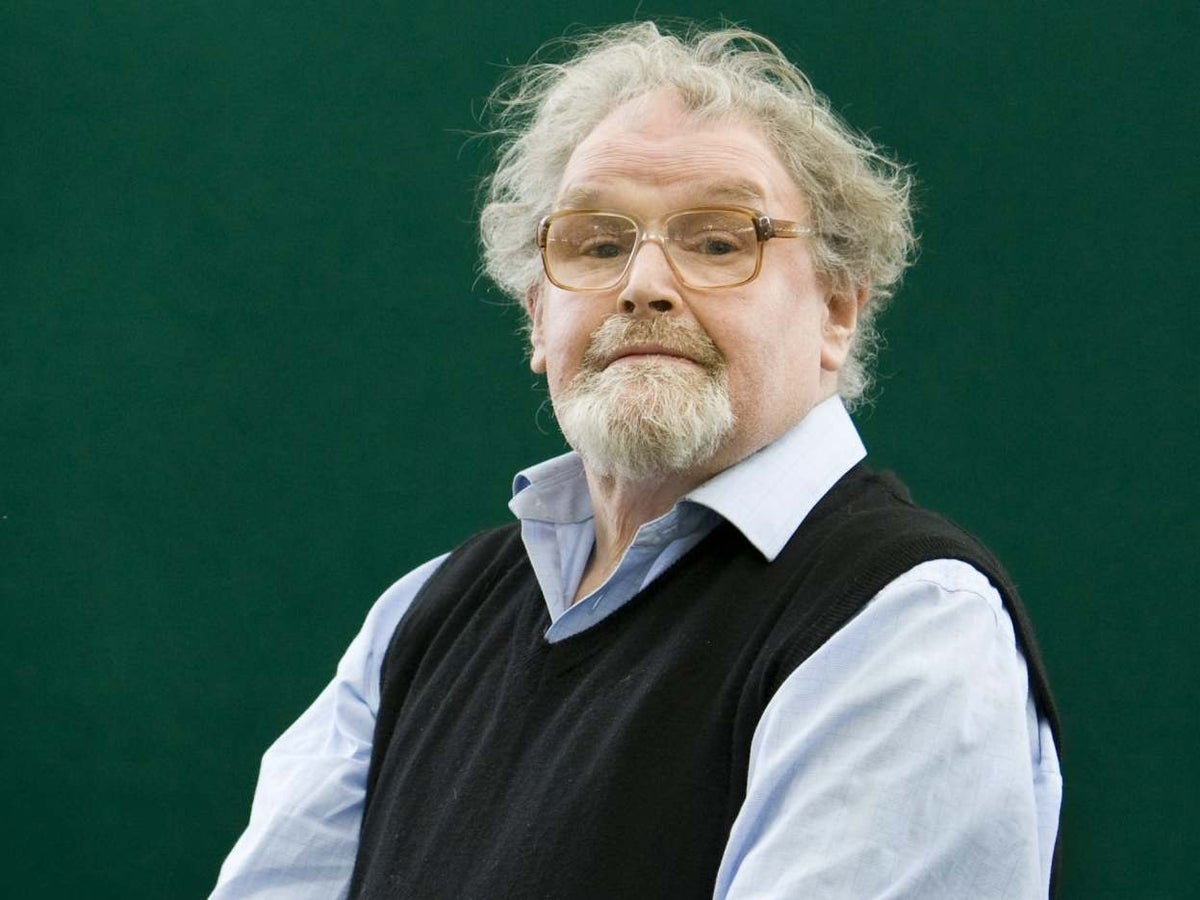
Childhood
Gray's father, had been wounded in World War I. The Scottish Youth Hostels Association was founded with his support after he spent many years working long hours in a box factory. His mother's name was Amy (née Fleming), and she came to Scotland from Lincolnshire with her parents after her father had been blacklisted in England for his union activities. She was employed as a stock clerk in a garment factory. Gray and Stonehouse were evacuated from Auchterarder, Perthshire, during World War II.

Teen years
In his spare time, Gray enjoyed reading Winnie-the-Pooh stories and comics like The Beano at the local public library. Edgar Allan Poe, the Dandy, had a profound effect on young Gray. At Whitehill Secondary School in Riddrie, he was editor of the school magazine and earned medals for Art and English. His family resided on a council estate. Gray began writing short stories as a teenager after reading from a version of Aesop's Fables on BBC children's radio when he was eleven. In the year when his mother passed away from cancer, he turned eighteen and began his studies at Glasgow School of Art. Lanark, his debut novel, was initially titled Portrait of the Artist as a Young Scot and was written while he was still an art student.
Adult years
Alasdair Gray penned some of Scotland's most acclaimed — and weird — literature,
which he frequently interspersed with his own finely etched images.
Life outside the workplace
Inge Srensen, a Danish nurse, and Gray were married in 1961. Andrew was born in 1963, and the couple divorced in 1969. While Alasdair Gray's eight-year romance with Danish jeweller Betsy Gray ended due to Alasdair's heavy drinking and failing to care for her kid during his cancer treatment, the two remained close friends. After Gray's first marriage ended in 1991, he married Morag McAlpine, who died in 2014. He'd spent his entire adult life in Glasgow, and he was proud of it.
A piece of visual artwork
The run Mór arts centre in Glasgow has a new mural. Gray painted theatrical scenery for the Glasgow Pavilion Citizens Theatres after he graduated from art school and went on to work as a freelance artist. It was for the Scottish-USSR Friendship Society in Glasgow that he painted his first mural, "Horrors of War". Under the Helmet, a BBC documentary on his life and work was released in 1964. There are just a few of his murals left, however, they can still be found in the West End of Glasgow's Ubiquitous Chip restaurant and the Hillhead subway station. One of the largest works of art in Scotland, his ceiling mural for the run Mór Byres Road theatre (created with Nichol Wheatley) took several years to complete. Modern folks from Glasgow are in the foreground as Adam and Eve embrace against a night sky.
Working as "artist recorder"
Gray worked as Glasgow's "artist recorder" at the People's Palace museum from 1977 to 1978, according to a Labour government scheme. Many of his sketches depicted the city's residents and notable figures, from politicians to artists to the general public, and even depicted workplaces where people worked. As of right now, they are part of the Kelvingrove Art Gallery and Museum's collection. Many museums and libraries throughout the world have his artwork, including the Kelvingrove Art Gallery and Museum in Glasgow; Victoria and Albert Museum in London; Hunterian Museum in Edinburgh; Arts Council of England; and Viktor Wynd Museum of Curiosities in London. Gray had a major retrospective at the Kelvingrove Art Gallery in 2014–2015. The exhibition, titled Alasdair Gray: From the Personal to the Universal, drew nearly 15,000 attendees.
Writing
Gray's first radio and television dramas, Quiet People and The Fall of Kelvin Walker, were both broadcasts in 1968.
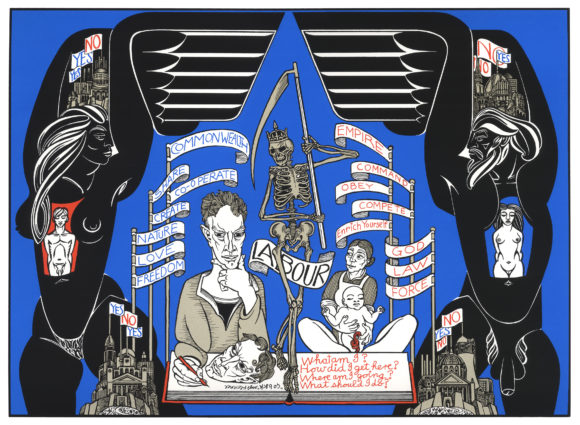
Gaining fame
He was a member of Philip Hobsbaum's writing group from 1972 to 1974, which also featured James Kelman. With Edwin Morgan's help, he was awarded a Scottish Arts Council grant in 1973, which allowed him to carry on working on Lanark. He was the University of Glasgow's writer-in-residence from 1977 to 1979. Lanark, his debut novel, was widely acclaimed when it was released in 1981 and went on to become one of his most well-known works.
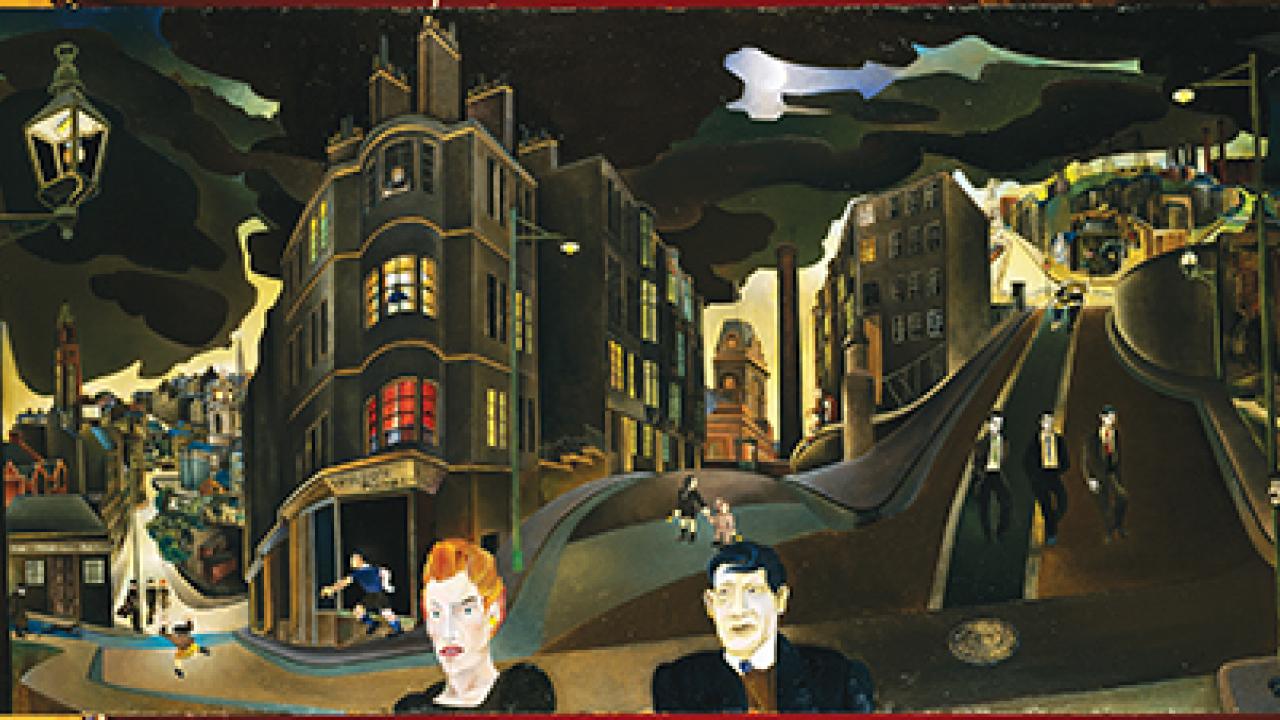
His life in his stories
While writing A Life in Pictures in 2010, Lanark detailed the aspects of his life that he based on his own experiences, including his mother's death when he was young, attending art school and having severe dermatitis and shyness, as well as finding it difficult to date women. In 1983, he won the Cheltenham Prize for Literature for his collection of short stories Unlikely Stories, Mostly. Gray's short stories from 1951 to 1983 are collected here.

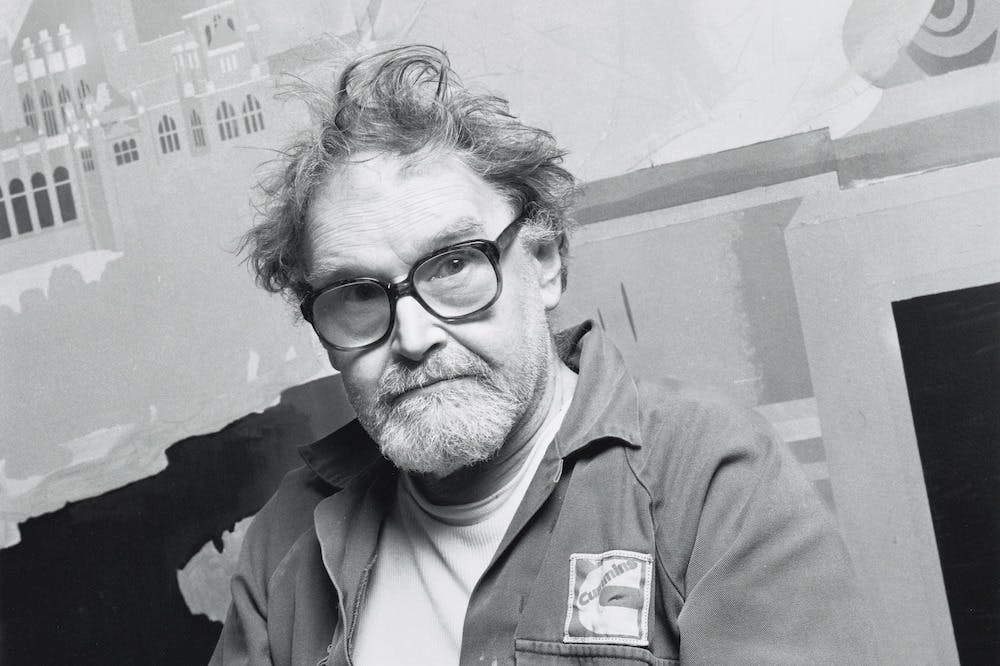

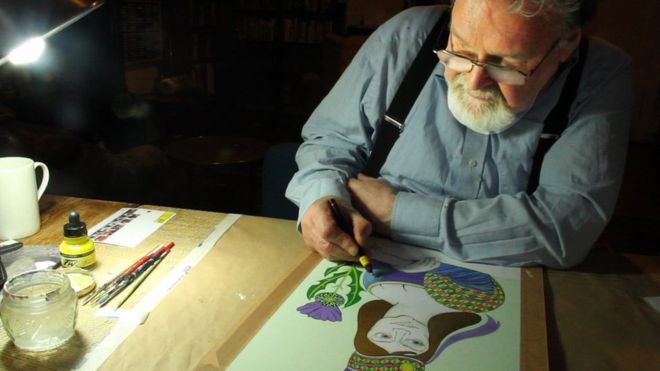
Clarendon Fine Art
In Scotland, Clarendon Fine Art opens its first gallery
The launch of a new destination gallery in Edinburgh has been announced with pleasure by Clarendon Fine Art. The new gallery is located in the St. James Quarter (SJQ), a brand-new, dynamic area designed and curated for the people of Scotland, among the independent and designer stores. Clarendon Fine (Bond Street Art Gallery) was also opened in Chelmsford. A call and collect service, virtual appointments, and free delivery are all provided by Clarendon Fine Art in Chelmsford. We cordially encourage you to stop by, get to know the staff, and peruse our award-winning collections of fine art for you and your home in an opulent setting with a welcoming atmosphere. We regularly organize personal appearances by well-known international figures as well as exhibitions, private viewing, and other events. Our remarkable collection of fine artists includes prize winners, top international names, and exceptional new talent. The paintings convey a sensation in order to captivate the audience and transport them to the situation.

As we attempt to explain, the satisfaction you get every day from having something you love on your wall is rather a profound thing. We’re trying to persuade people to buy a piece of art because they love it. And it is not only about buying some pieces of art, it is also about creating them by yourself if you have any plans and intentions.

On the way to improving your painting skills
Almost all of us have been there at that point when you are working on a painting with a specific end goal in mind, but somewhere along the way, something goes wrong. In terms of your painting expertise, you already know where you want to be, but how do you get there? What are some tried-and-true techniques for enhancing your painting abilities?
1. Try a New Tool after fully understanding your materials. If you work in watercolor and have never tried applying the paint with a palette knife, for instance, you could discover it opens the door to some intriguing ideas. Simply set aside some time to experiment and play around with the tool. Play with it instead of attempting to create a painting. You could be astonished at how it might speed up a certain step in the painting process.
2. Create a painting plan. When we view the works of numerous historical masters, we frequently assume that the paintings were quickly and easily produced, depending just on their inherent talent and an ideal painting technique. However, the truth is that many masters—even those who work very loosely—undertook substantial planning before applying the paint. Many included comprehensive color studies of the composition, while others developed formal drawings that they would then transfer to the painting surface. Some artists took their time and produced numerous preliminary sketches.
3. Practice even for ten minutes every day. This has something to do with practice, but it’s a little bit of a different idea. The woman shared her situation, she told that her spouse used to always beat her in Scrabble many years ago. She was very annoyed. After that, the women started solving crossword puzzles with breakfast every morning. It only took a few minutes, but she did it every morning. After several months, the wife started to see that her crossword skills had improved, and ultimately she started to outperform him at Scrabble.4. Examine Nature Any subject matter can be related to this, and it could entail basic observation through a photo shoot, sketching real-world items or situations to study lines and values, or possibly doing color studies where we aim to match colors or take notes of color combinations in nature.
5. Simplify forms. Take a simple object or scenario and describe it in terms of these three qualities as an excellent practice exercise. Sketch the form or composition using only shapes, such as circles, ovals, squares, triangles, etc. You can do a value sketch in black and white of the object or scene by considering its light, medium, and dark gray tones. Alternately, you may use color blocks to construct a color study of the object or scene.
6. Visit galleries. Don’t stop at the usual observations when you visit the museums or galleries. Get as near to a piece as you are permitted to when it captures your attention and pay attention to how the artist used their brushstrokes to portray a form or another element of the painting. What combinations of colors did they use? Pay attention to the value patterns as well. How did they guide the viewer’s eye around the composition with the use of lights and darks?
7. Recognize your areas of weakness. How do you identify those areas? Try painting a straightforward object and assess it yourself or have a trustworthy person look it over and point out the parts that seem strong and those that seem weak. Then seek ways to make it better.
What Is The Meaning of the History of Art?
In the study of art history, it is not sufficient to list all of the different art trends and arrange them in chronological order; this is not sufficient. It is the examination of artefacts in the context of their historical development. Art historians look into the historical importance of works of visual art to better understand them (such as paintings, sculptures, and architecture). The other goal of art historians is to ascertain the authorial origins of works of art (for example, history of art warwick), which includes determining who created what work of art when and for what reason, among other things.

The Most Reknown Kinds Of Art History
Iconography has had a significant impact on the development of art history. It comprises searching for the deeper meanings buried behind various artistic expression works. The visual components of a painting and its importance are among the elements that art historians consider. Understanding what a piece of art signified when it was created is critical for art historians. Through this study style, you can learn about the civilisations that have come before us and about ourselves.
What is the significance of art history in today’s society?

Why should one pursue a degree in art history when so many other possibilities are available? When we look at it from a career perspective, we see that the discipline performs fundamental functions.
- Recognising and respecting others’ traditions
Taking a look at visual art, which recounts stories about the past, might help us learn more about our history. Through the study of art history, we can understand the evolution of our civilisation across time. It’s a method of discovering more about ourselves. What motivates us to hold particular beliefs? What shaped our way of thinking and seeing the world around us?
- Improving your capacity to think critically and independently
Isn’t it more necessary to study art history than to memorise a deluge of names and dates to understand the past? On the contrary, it pushes you to delve deeper into the visual arts in all of their various manifestations. If you want to support your findings, you’ll need to improve your critical thinking abilities by putting together logical and persuasive arguments.
What is the point of studying art history?
Arts and culture are both reflections of and contribute to a culture’s sense of self-identity. By looking at art from the past, we can better understand how people have regarded themselves and the world. As a result of the fact that art creation is one of the most common human activities, we may learn about our human history and how it has influenced our current culture of art history. You will learn to talk and write about works of art from various periods and places in the same way that other students learn to write about literature or history. On the other hand, art historians will educate you on how to develop specific skills. You will increase your visual reasoning abilities, as well as the ability of your eyes and brain to do necessary inspections as a result of this training.
He has also written for stage, radio and television
Further activity

Not only a writer
He was the official Artist-Recorder for the People's Palace local history museum in Glasgow in 1977.
and was Writer in Residence at Glasgow University from 1977 to 1979.
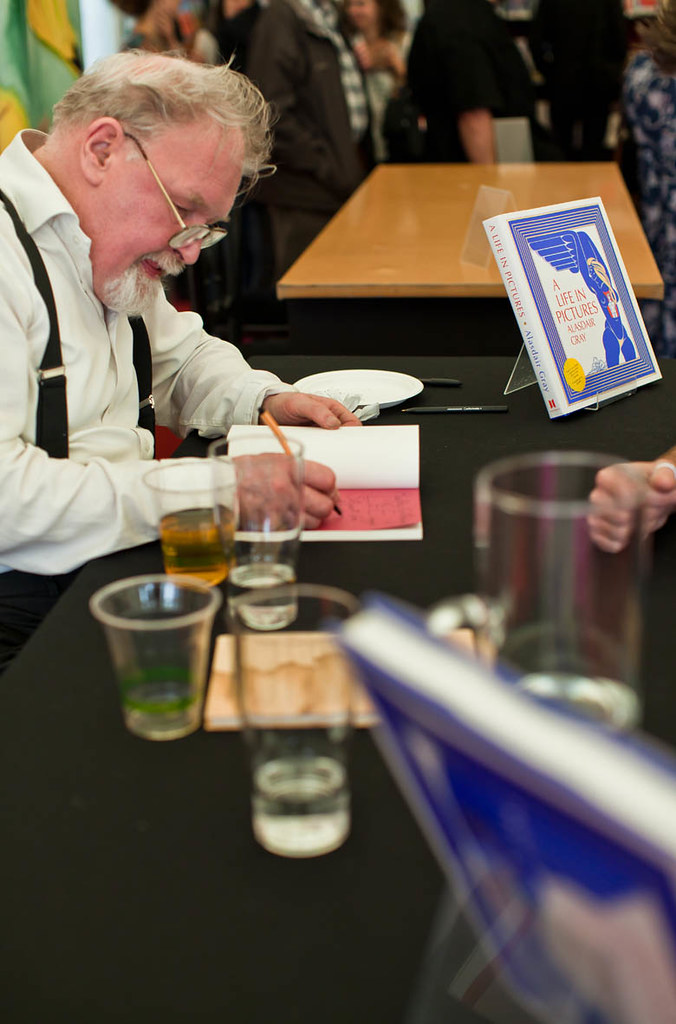
Creative talents
Collins Gallery at Strathclyde University and the People's Palace local history museum on Glasgow Green both have collections of his works.
In 2001, he was named joint Professor of the Creative Writing Program at Glasgow and Strathclyde University, alongside Tom Leonard and James Kelman.

